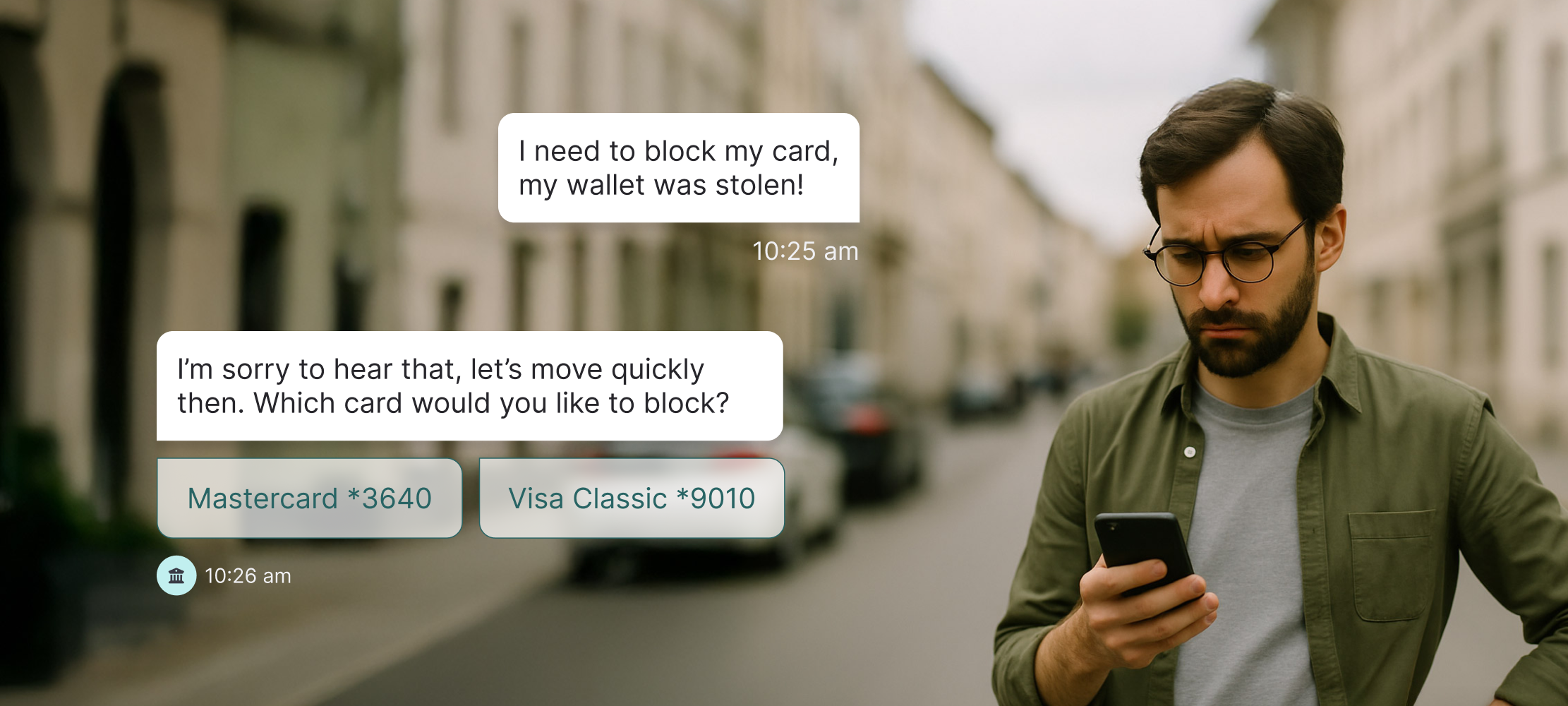
A frequent question companies ask is: how do we reduce calls? Enterprise businesses are well aware that phone IVR is just an expensive and outdated way to frustrate customers. IVR deflection to WhatsApp not only reduces costs, it also improves customer satisfaction.
Traditional phone IVR needs to retire
Phone calls are expensive for every business that accepts them. Voice automation and IVR systems are still frustrating for customers and largely disliked. It’s the opposite of a win-win for everyone.
89% of customers who abandoned a company due to poor IVR service spent their money with a competitor.
So, farewell IVR, and hello to conversational self-service.
Everyone is familiar with this scenario:
A customer phones a company and is told by IVR, “All our agents are currently busy. Please hold.” After holding a few minutes, the customer is told, “The current wait time is 20 minutes.”
Now, imagine a different scenario:
“The current wait time is 20 minutes.” And then the IVR system adds, “Would you like us to attend to you on WhatsApp?”
The customer, who just wants to have their issue resolved, will most likely reply with an enthusiastic YES.
Long wait times and the frustration of a one-way voice conversation are extremely negative experiences for customers that can result in losing their business.
This negative experience can transform into a key, positive customer experience like an IVR deflection to WhatsApp by deflecting them to a channel they prefer in less than a minute.
IVR deflection to Messaging & Chat: the way forward
Switching to messaging benefits all customer segments: from digital natives who prefer to avoid the phone and use messaging instead, to those who traditionally call live agents first but dislike that the channel prevents them from multitasking and can involve long waits.
Companies are successfully deploying phone IVR deflection to WhatsApp Business API.
This is not surprising: WhatsApp is the most popular messaging app in the world, with more than 2 billion monthly users in over 180 countries. Hubtype is one of the Official WhatsApp Business API providers, and the only one to offer a 1-1 messaging solution for enterprise businesses.

The opportunity to deflect calls to messaging achieves two things:
- Greatly reduces costs by moving a synchronous channel to an asynchronous channel — one that is cheaper to attend
- Increases customer satisfaction and NPS
Switching to messaging lets you respond to customer needs immediately with automated, context-driven messages that resolve most queries.
For more complex cases, Hubtype’s technology enables a seamless human-agent handover. This provides a perfect balance, as it frees up agents to do higher-value work and be more efficient. Purposeful automation also powers unique experiences at scale. It uses customer details, product info, purchase history, and more to personalize the customer journey.
Unlike IVR, automation on messaging channels improves experiences — instead of creating more friction. Using an IVR deflection to WhatsApp provides customers the flexibility to leave and re-enter the conversation, anytime or anywhere. As a result of using a conversational app, you can include graphical elements like attachments, photos, or embedded calendars. Customers can even make transactions directly from their WhatsApp app.
Hubtype’s clients have benefited from a 49% reduction in calls, 5x faster resolution times, and a 3x higher engagement rate than email or phone.
Hubtype’s platform allows real-time reporting on ticket volume and other KPIs. It helps unify all your customer data through integrations with CRM, ERP, analytics, and APIs.
Best practices for launching IVR deflection to WhatsApp
Capture customer intent
First, it’s crucial to understand why your customers are calling. Day-to-day simple inquiries can be successfully answered via WhatsApp. For more complex cases, the customer may need to speak directly to a representative.
Therefore, select which customer segments and issue categories would be best served by the new messaging channel.
Collect WhatsApp opt-in
An opt-in is when customers give explicit consent to receive messages over WhatsApp from your business. Customers must consent to opt-ins before you message them using WhatsApp.
Ask customers on phone IVR to opt-in to receive messages on WhatsApp by pressing a specific key on their dial pad. For the second opt-in, automation can be used in WhatsApp when the customer enters the WhatsApp conversation with the business.
Champion organizational change
Phone IVR’s system helps route specific issues to dedicated phone agents. Your WhatsApp platform needs to do the same. Evaluate high performers on your current support teams and train them to reply to customers using WhatsApp.
You must determine the best WhatsApp conversation-to-agent ratio for optimal CSAT or NPS. Most enterprises have a 5:1 ratio when they first begin. Those who have customer service teams with more messaging experience can push to 16:1. It will take some time and experience to achieve the right balance for your company.

Test and scale accordingly
Before offering IVR deflection to all your customers, it’s best practice to first test with a small section of your customer base. You can program it so that only a certain percentage of your audience is part of the test. Or you can add the WhatsApp call-to-action deeper within the phone IVR decision tree options.
Once you are sure that the correct resources are in place to accommodate 100% of your customers, you can offer deflection to WhatsApp as an option for everyone.
Learn how to deflect IVR calls to WhatsApp for a seamless customer experience:


.jpeg)









.jpg)
